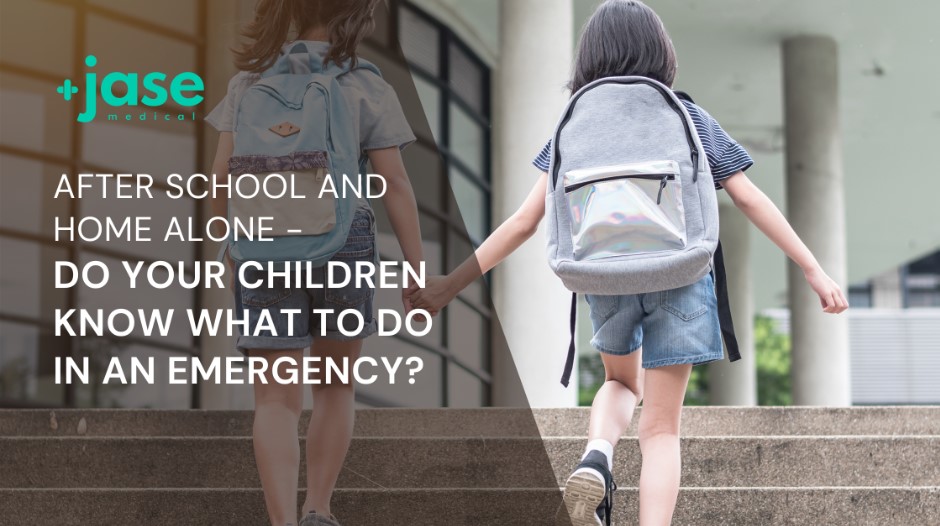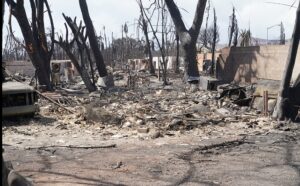As summer winds down and focus on starting a new school year is right around the corner, many parents and children are getting ready- adjusting bedtimes, school lunches, transportation to and from school, and in some instances, starting a new school. Along with this, many children will spend some time at home alone after school.
About 3.5 million American children between the ages of 5 and 12 spend time at home alone after school. The average amount of time isn’t much—only about an hour a day, according to a U-M study presented in Chicago at the Society for Research on Adolescence biennial meeting. This number represents about 26 percent of American children who spend time after school alone, including time spent getting from one place to another (from school to home, for example) on their own.
Many children are ready to be home alone for an hour or so; however, a lot can depend on the maturity and ability level of the individual child.
In addition, each living situation is unique. Families living in apartments and condominiums have a different lifestyle and circumstances than their suburban and rural counterparts. Even geographic locations-where you live-playa large part in readying your child to stay home alone.
No matter what age your children are, or type of housing, there are still many situations in common that you can ready your child for, ensuring their safety while home.
Assess your children’s age and ability
Ability doesn’t necessarily come with age. A lot depends upon your child’s temperament, emotional maturity, and physical ability. For instance, children with special needs- whether physical, mental or emotional-should be factored into how much time they can be home alone. For example, a 9-year-old child on the autism spectrum may not be able to stay at home alone, whereas a 9- year-old without special needs could be left alone for a short period of time.
Geographical location
Do you live in an area that has extreme heat or cold spells? Do you live in a flood zone? Do you live in a hurricane or tornado-prone area? If so, does your child know what to do if these situations arise? What if you cannot get home because of an adverse weather event? Does your child know what to do?
Weather events are the most likely emergency- assess the most likely weather that your children could encounter, during a severe weather event, the power may go out, phones may not work, and heat and air conditioning may also not be working. In addition, if there is severe weather and you can’t get home to your children in the usual time frame, would your children know what to do? Knowing what to do is important if cell phone service goes down and there’s no way to communicate with each other.

Home-alone emergency supplies
- Basic first aid kit with basic supplies. Instruct your children how to use it in case of a minor emergency and when they should be calling 911. Laminate a card to keep in the first aid kit with these instructions.
- Two flashlights with extra batteries
- Bottled water
- Prepackaged snacks
- Portable radio with extra batteries with the emergency services bands
- Portable cellphone battery chargers for each cell phone in the home. Test periodically and ensure they have a charge. Keep an additional cable with them for easy access.
- Extra blankets and cold weather gear- and a small tent that can be set up in the bedroom or living room to contain heat in case you aren’t able to get home in a timely fashion
In case of evacuation
- Evacuation should not be taken lightly. Most of the time, your child is safer in their home than in the great outdoors. Fires, power outages that affect heating, and even door-to-door evacuation orders are reasons your child needs to be prepared. Luckily, having to evacuate is not very likely. But it is always better to be prepared than to have regrets.
- Put together a go-bag for each child in the home. Have the child put the bag on and ensure it isn’t too heavy and fits their frame. In the bag, place a laminated card with their name, address, medications, allergies, parents’ names, and phone numbers.
- Two bottles of water for each go bag
- Two or more prepackaged snacks-Lara bars are a great nutritious snack
- Child’s medication for at least three days in clearly labeled bottles
- A change of clothing-socks, pants, underwear, shirt, hat, gloves, and coat/sweater, depending on your climate.
- Headlamps and extra batteries (headlamps free hands for tasks)
- Reflective tape on the go bag, or purchase reflective tape and apply it to the backpack for visibility
- Laminated map of the immediate area that you live in
- Rechargeable hand warmers (with recharging cables) if you live in a cold weather area
- Phone and portable recharger with cable
Put together a plan and practice.
- Post on the refrigerator or a conspicuous place emergency phone numbers, relatives, trusted friends, and neighbors that your children can contact or go to in the event they need to leave home. Make the people on this list aware that your children will contact them in an emergency.
- Pull out the first aid kit, go through all the items in the kit, and practice using them—role play. Purchase extra gauze and bandages for your children to use and practice with. As you go through scenarios, advise them to treat only minor cuts and injuries. Give examples of a minor injury and when they should call 911 or seek a trusted adult if phone service or power is out. Ideally, take your child to a local first aid course.
- Have your children operate the portable radio. Have them remove and replace the batteries, and demonstrate they know how to find the emergency station(s) for information about local weather events.
- Practice removing and replacing flashlight batteries. Make sure they know how to operate them.
- Review and rehearse what your child would do if phone service were unavailable. For example, not to panic, and if able to safely make it to a trusted neighbor’s home.
- If your child has misplaced or lost their key, have an alternate area to access a key, not just under a mat or a rock near the house. These would be obvious places for intruders to gain access to your home by finding that key.
Backup plans Kids should know where a key is hidden in case they’ve lost theirs, where to go in the neighborhood if they need help, and who to call if there’s a problem and they can’t be reached.
– Brooke Lounsbury, RN
Medical Content Writer


